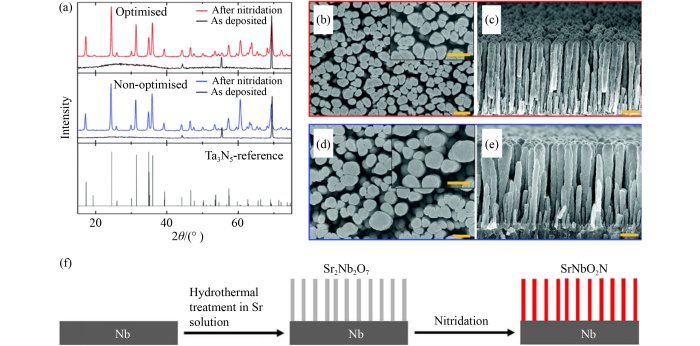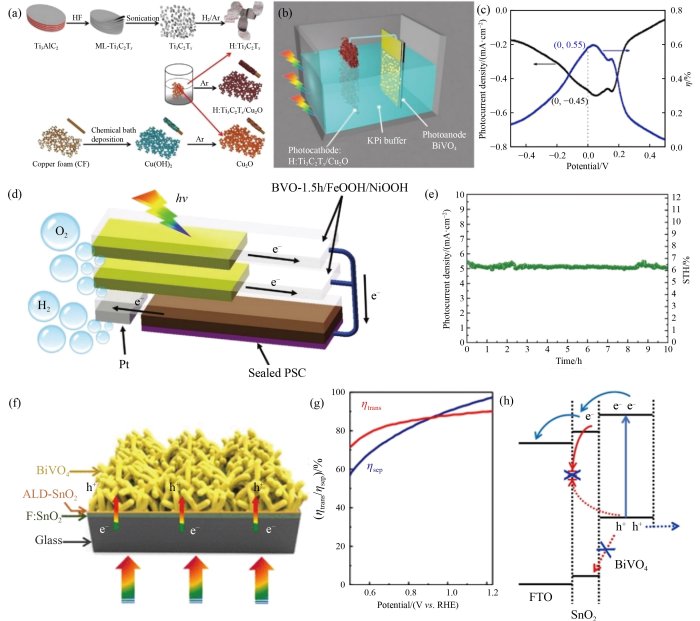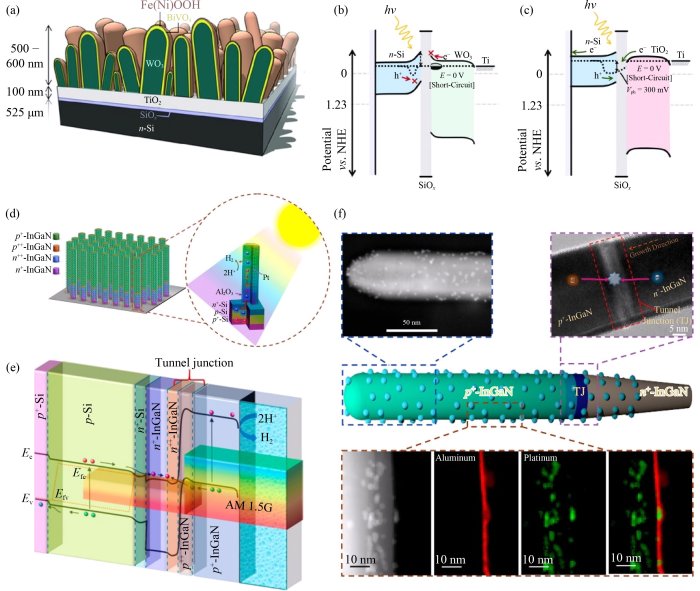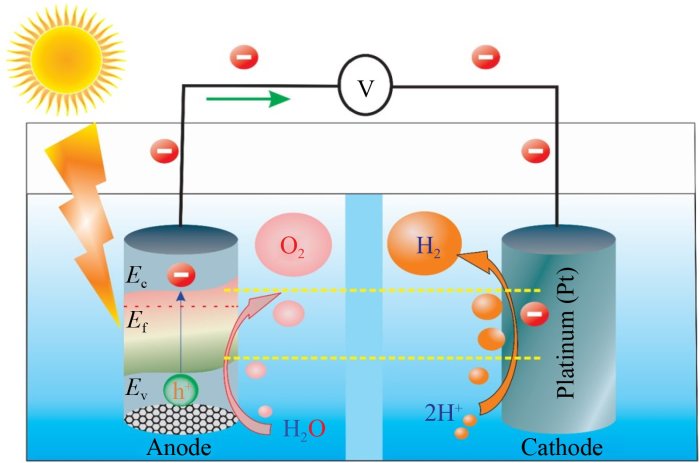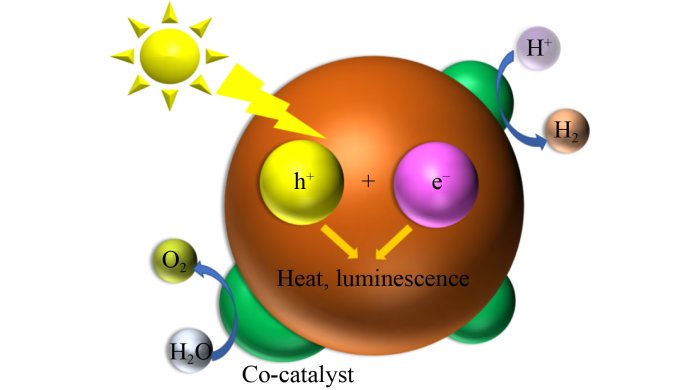For example, Wang et al. [
155] reported a Z-scheme system based on the ZnO/CdS heterostructure, which was applied to highly efficient PEC water splitting under simulated solar light irradiation. The as-prepared 1 wt% Pt-loaded (ZnO)
1/(CdS)
0.2 obtained 3870 μmol·h
−1·g
−1 for H
2 evolution. The excellent PEC water splitting performances with the lifetime of photoexcited carriers prolonged were attributed to the Z-scheme PEC system consisting of two closely contacted semiconductors. Meanwhile, an assorted Z-scheme comprising an O
2 production photoanode of BiVO
4 or WO
3 and a H
2 production photocathode of Pt/SrTiO
3:Rh was proposed by Kato et al. to decompose water into H
2 and O
2 under visible light irradiation, in which the H
2 evolution on the Pt/SrTiO
3:Rh photocatalyst was improved and the O
2 evolution was restrained by Fe
2+ ions due to the oxidation of Fe
2+ [
156]. In this system, the PEC overall water splitting could be realized with the suppression of the back-reactions between H
2 and O
2, which could be ascribed to the novel Z-scheme system acting as not only an inhibitor of the back-reactions but also an efficient electron mediator. In addition, a (ZnSe)
0.5(CGSe)
0.5/Au/BiVO
4:Mo based Z-scheme was constructed by applying a particle transfer method to the PEC overall water splitting (Fig.5(a)) [
157], in which (ZnSe)
0.5(CGSe)
0.5 material worked as an HER photocatalyst and Au/BiVO
4:Mo as an OER photocatalyst. The as-prepared Z-scheme system could obtain the highest quantum yield of 1.5% at 420 nm light range among all the reported metal sulfides/selenides Z-scheme photocatalysts. Similarly, P-doped twinned Zn
0.5Cd
0.5S
1−x (d-ZCS-P)/N-doped carbon nanotubes (N-CNTs)/Bi
4NbO
8Cl-based Z-scheme photocatalysts were synthesized in a two-step procedure containing spray-coating and annealing treatment (Fig.5(b)) [
158]. The as-prepared photocatalysts achieved an STH efficiency of 0.15% under ambient conditions. Thus, it could be concluded that a well-constructed
p–n junction system is suitable for conducting efficient charge separation which enhances the PEC performance. The characterization of the band structure is of huge significance to determining the corresponding fundamental electronic configuration and band symmetry, which aims at achieving deeper comprehension of the thermodynamic feasibility of the Z-scheme-based devices during the PEC water splitting and the impact on the conductive mediator. The d-ZCS-P possessed a band gap of 1.97 eV and the impurity level had a band gap of 0.25 eV below the CB, which could be calculated by the linearized form of the Urbach equation (Fig.5(c)) [
158]. Given the band gap of 2.2 eV displayed by Bi
4NbO
8Cl, a conclusion could be drawn that the Bi
4NbO
8Cl was visible-light active due to the exceedingly dispersive O 2p orbital that could narrow the band gap and enhance the electronegative VB. Recently, Wang and coworkers [
159] designed and synthesized a series of ZnO/TiO
2-based core-shell heterostructures, the carrier lifetime of which was prolonged by ~20 times compared with the bare ZnO nanorods by time-resolved photoluminescence tests. More interestingly, the performance was further enhanced through employing Ag nanoparticles at the ZnO/TiO
2 interface to assemble a ZnO–Ag–TiO
2 Z-scheme structure. The innovative Z-scheme structural samples were subsequently integrated into a PEC cell to conduct the solar water splitting. The PEC cell achieved a photocurrent density jump over 5.5 mA·cm
−2 in each circle, implying a photo-to-current efficiency of over 25% in the UV region. Under the visible light irradiation, the optimal Z-scheme structural sample displayed a high photocurrent density of 0.13 mA·cm
−2. The outstanding PEC performance demonstrated that the ZnO–Ag–TiO
2 nanorod array-based Z-scheme system could act as a prolonged carrier lifetime system for the PEC water splitting.

